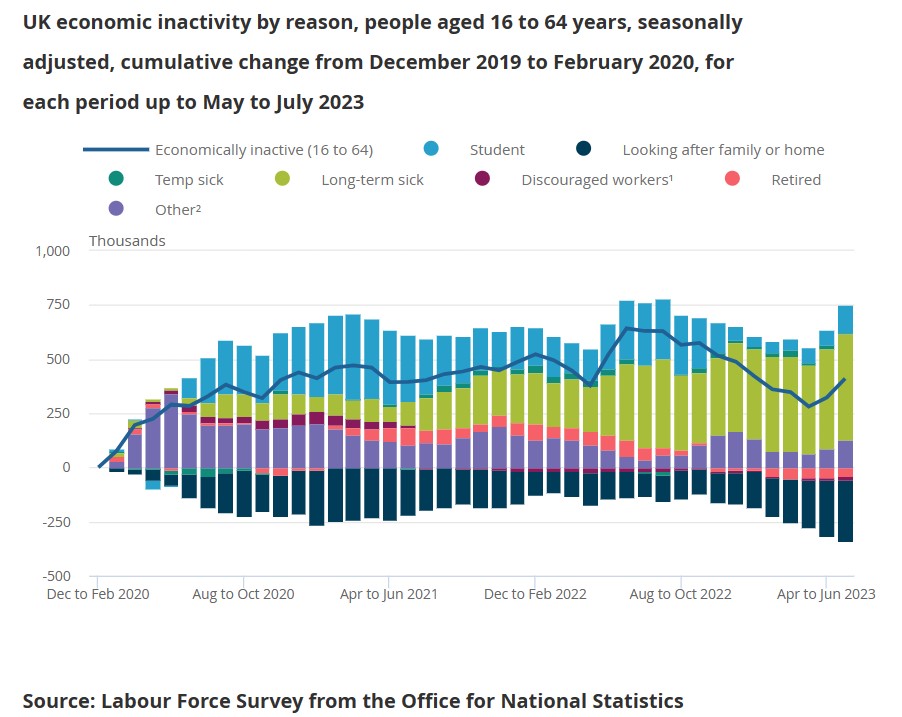Almost half a million people have now joined the ranks of economically inactive due to long-term sickness.
While June data from the Office for National Statistics (ONS) indicated a new record of 464,225, figures for July indicate this number has now risen to 491,433.
May data had indicated a decline of almost 30,000 in the UK – marking the first decline in the increase in long term sick numbers since October 2022.
At the beginning of the pandemic as of February 2020, around 2m people were economically inactive due to long term sickness.

Brett Hill, head of health and protection at independent consultancy Broadstone, said “incredible” pressures on the NHS including waiting lists at all-time highs, deteriorating public health and pay disputes are feeding through into record demand within the private healthcare sector.
“Employers are increasingly recognising that they need to invest in private healthcare options to protect the health and wealth of their employees and this is now a mission-critical business investment,” Hill continued. “The urgency of investing in employee wellbeing programmes is demonstrated by the surging numbers of employees falling out of the workforce due to chronic illness which is turning into a major economic and productivity drag.
“The record numbers of insured admissions in the latest data highlights the growing upwards pressure on premium costs, something which many employers will need to contend with in the coming year. In the short-to medium-term, there appears little prospect of the strains on the public health system easing and we are likely to see continued strong demand for private healthcare in what could become a ‘new normal’ for the UK.”






